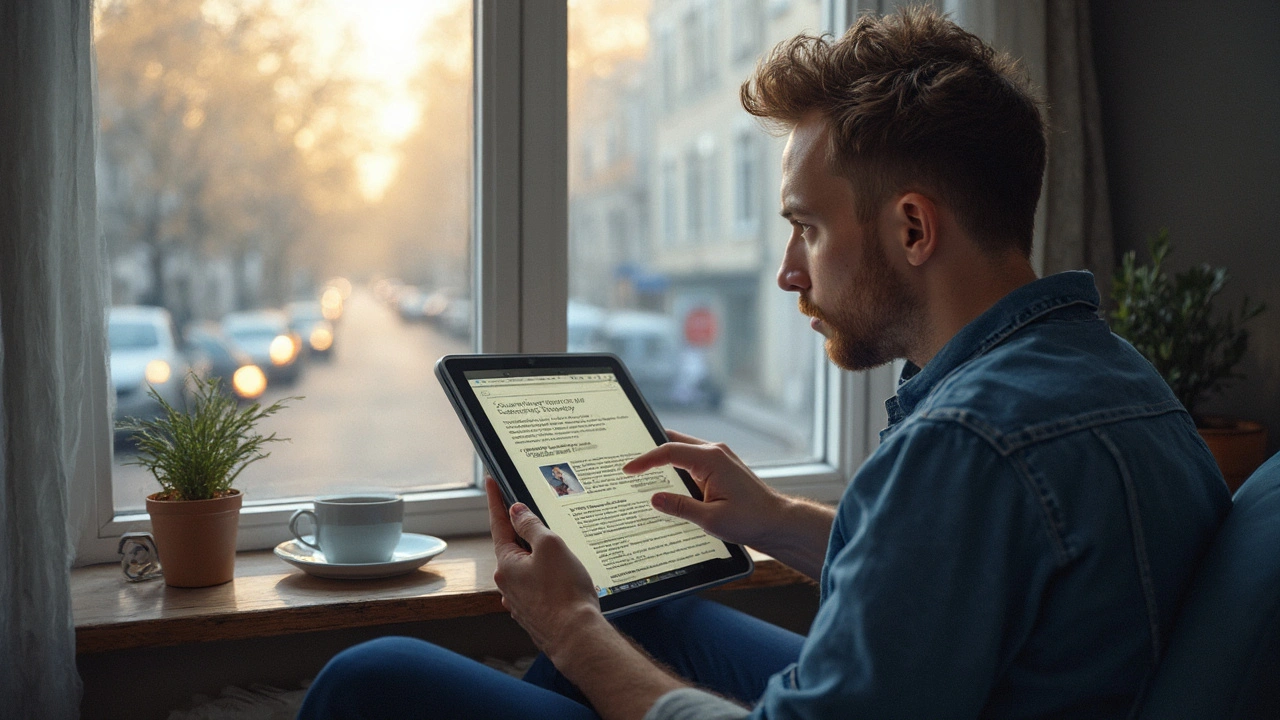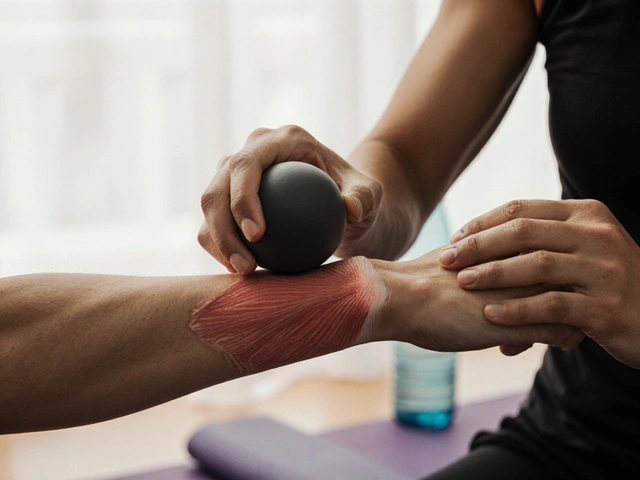Cupping Therapy: Is This Wellness Trend Worth Trying for Real Results?

Honestly, seeing those big round marks on athletes and wellness influencers is enough to spark anyone’s curiosity about cupping therapy. It's hard not to wonder: does it actually do anything, or is it just for looks on Instagram? Cupping isn’t a new idea—it’s been popping up in medical texts for thousands of years, from ancient Egypt to traditional Chinese medicine. But the way it’s landed in modern wellness, it seems both mysterious and suddenly everywhere.
Here’s the quick version: cupping uses special cups (glass, silicone, bamboo, or even plastic these days) to create suction on your skin. This suction is supposed to boost blood flow, help with muscle soreness, and give your body a jumpstart on healing itself. Back in the day, I thought it was a bit wild—then my wife tried it after a tough week at the gym and came back raving about how much looser her shoulders felt.
Trying cupping is pretty simple, and you don’t have to be a pro athlete or a yoga fanatic to benefit. Plenty of regular folks use it for back pain, tension headaches, or to shake off that foggy, heavy feeling after long desk days. Still, there’s more to it than just plopping some cups on your back. It pays to know what you’re getting into—and what’s just hype, or worse, a waste of cash.
- What Is Cupping and How Does It Work?
- What to Expect During a Session
- Surprising Benefits and Who Should Try It
- Tips, Aftercare, and Things to Watch Out For
What Is Cupping and How Does It Work?
At its core, cupping therapy is all about creating suction on your skin to move blood, loosen muscles, and speed up recovery. This hands-on approach has roots going back centuries—think ancient China, Egypt, and the Middle East. The idea? Sucking up the skin and part of the muscle pulls blood to the surface, which fans of cupping believe helps clear out stagnation, eases pain, and chips away at deep knots that massage sometimes can’t reach.
There are two main types: dry cupping and wet cupping. Most people in the U.S. stick with dry cupping, where a cup is placed on your skin and suction is created inside it. Wet cupping goes a step further by involving tiny pinpricks on the skin, but that’s less common at typical wellness spots.
Here's what usually happens during a basic session:
- The therapist puts a cup on your skin—common places are the back, shoulders, or legs.
- Suction is created by either heating the inside of the cup first (the old-school way) or using a small pump to pull the air out (the modern way).
- The cup sits in place for about 5–15 minutes. Sometimes, the therapist slides it around a bit, which can feel like a weird but satisfying massage.
Different types of cups do the same basic thing. Glass and plastic are the most popular now because they’re easy to clean and control. Silicone cups are softer and are great for moving around—people even use them at home for self-massage on areas like thighs or arms.
If you’re into numbers, a quick look at wellness stats shows cupping’s popularity has spiked. In a 2023 U.S. wellness survey, about 19% of respondents said they’d tried at least one session, and 49% of them reported feeling less muscle tension within days.
| Type of Cupping | Common Use | Discomfort Level |
|---|---|---|
| Dry Cupping | Muscle recovery | Low to moderate (brief pressure) |
| Wet Cupping | Detoxification | Moderate (skin pricks involved) |
| Moving Cupping | Stubborn tension spots | Mild (like a deep massage) |
Since self-care is a buzzword these days, lots of folks get curious if cupping therapy could fit into their weekly reset. It’s not magic, but for a lot of people, the combo of pressure and blood flow feels pretty great, especially after tough workouts or desk marathons.
What to Expect During a Session
Thinking about booking your first cupping therapy session? Here’s what it’s really like. You show up, chat with the practitioner about why you're there—maybe you’ve got nagging muscle knots, or you just want to see what all the fuss is about. You’ll most likely lie down on a massage table, usually shirtless or with loose clothing, depending on where they’ll be placing the cups.
The therapist will clean the skin and sometimes rub on a little oil to help the cups glide if they’re using the sliding method. With traditional fire cupping, they briefly hold a flame inside each glass cup to suck out the air (don’t worry, they don’t put the fire on you!). More modern spots use a vacuum pump to pull out the air if they’re working with plastic cups. That suction is what makes your skin rise up into the cup—doesn’t really hurt, but feels weirdly satisfying, like a tight pinch mixed with a gentle pull.
Cups can stay put for anywhere from five to fifteen minutes, depending on your comfort and the reason you’re there. The practitioner may leave you to chill, or gently move the cups around if it’s a massage-style session. Here’s what usually happens step by step:
- Check-in and a quick health chat
- Get settled comfortably on the table or chair
- Skin is cleaned and maybe oiled
- Cups are placed and suction is created (by fire or pump)
- Cups stay put (or get moved) for several minutes
- Cups are removed, leaving signature round marks that fade over days
Those marks? They look dramatic but usually don’t hurt and aren’t bruises in the classic sense—they’re more like a circular hickey from the blood being drawn to the skin surface. Most folks just feel a little warm and loose afterward, not sore.
| Stage | What You Feel |
|---|---|
| Initial suction | Tightness, mild pulling |
| During session | Warmth, muscle release |
| After cups removed | Painless marks, relaxation |
All in, you’re probably in the room for 30 to 45 minutes, including getting ready. Some providers throw in a massage at the end, but that’s not a guarantee. Afterward, you’ll get basic aftercare tips—like keeping the marks clean and staying hydrated—which is key for getting the most out of your wellness experience.

Surprising Benefits and Who Should Try It
Here’s the part you probably care about most: what do people actually get out of cupping therapy? The biggest surprise is how many real-world problems it seems to help, at least for some folks. The most common thing I hear is pain relief, especially for tight muscles after workouts or for stubborn lower back pain. Sometimes, people notice better movement and less soreness after just one or two sessions.
There’s also some cool research behind this. A review in the Journal of Traditional and Complementary Medicine in 2021 looked at several studies and found cupping might help with conditions like chronic neck and back pain, migraines, and knee arthritis. Of course, it’s not a magic bullet—everyone’s results are different, and it works better for muscle tension than for deep joint issues.
Besides pain, another reason people try cupping is to tackle stress and general burnout. Say you’re someone who spends long hours at a desk (guilty), you end up with that buzzing tension in your shoulders. After a cupping session, you might feel lighter, looser, and just a bit more energized. Some even claim their sleep improves, probably because their bodies are finally relaxing.
| Possible Benefit | Who Might Notice the Most |
|---|---|
| Relief of muscle pain and tightness | Athletes, gym-goers, desk workers |
| Stress relief | Chronic stress sufferers |
| Migraines or headaches | People with long-term headache issues |
| Improved movement | Anyone with stiff necks, backs, or shoulders |
Who shouldn’t try it? If you’re on blood thinners, have skin conditions (like eczema or psoriasis) where the cups would go, or you’re pregnant, it’s best to skip it or talk with a doctor first. And if you expect it to fix a blown-out knee or serious medical problem—well, it’s just not built for that.
One tip: If you’re just starting out, let your practitioner know what you’re hoping to get out of cupping therapy. That way, they can tweak things to suit your needs, and you’re less likely to walk out thinking, "What was the point of that?"
Tips, Aftercare, and Things to Watch Out For
If you’re thinking about trying cupping therapy, there are some things you need to know to make it a good experience and get real benefits. First off, always pick a trained practitioner—not someone doing a side-hustle in their garage. Certified acupuncturists or massage therapists with cupping experience know where to place the cups and how long they should stay on, which actually makes a difference in results.
After your session, expect those round hickey-like marks. They’re pretty much a badge of honor in the wellness crowd, but they can last anywhere from a few days up to two weeks—especially if you bruise easily. This means you probably don’t want to schedule a cupping session right before a pool party or big family event unless you’re cool with showing off some new dots.
Right after cupping, your skin will feel tender and maybe a little warm. Here’s a quick aftercare list to get the best results and avoid irritation:
- Don’t shower or hit the sauna for at least a few hours. Wet heat right after cupping therapy can irritate your skin.
- Avoid super tight clothing over the treated area for a day or so.
- If you feel sore, a light lotion or aloe gel can help soothe the skin.
- Drink plenty of water—seriously. It helps your body clear out whatever the increased blood flow and circulation stirred up.
It’s rare, but some people can get lightheaded during or after a session, so don’t jump up and sprint out the door right away. Grab a seat and take a minute, especially if it’s your first time. Of course, if you notice any blistering or itching, let your practitioner know. That’s not normal.
Some folks should check with their doctor before trying cupping therapy: anyone with thin skin, certain blood conditions, or who’s on blood thinners. Pregnant women should avoid cupping on their abdomen or lower back. And if you have an active skin infection, skip cupping until it’s cleared up.
About 70% of people report their pain or tightness felt noticeably better for at least a few days after a cupping session, according to a 2022 review of clinical studies. That doesn't mean it’s a magic fix, but those odds aren’t bad for something that’s pretty low risk when done by the right professional.
Long story short: cupping therapy can give you a solid boost in how you feel, just don’t ignore the basics on safety and aftercare if you want the good without the bad.





